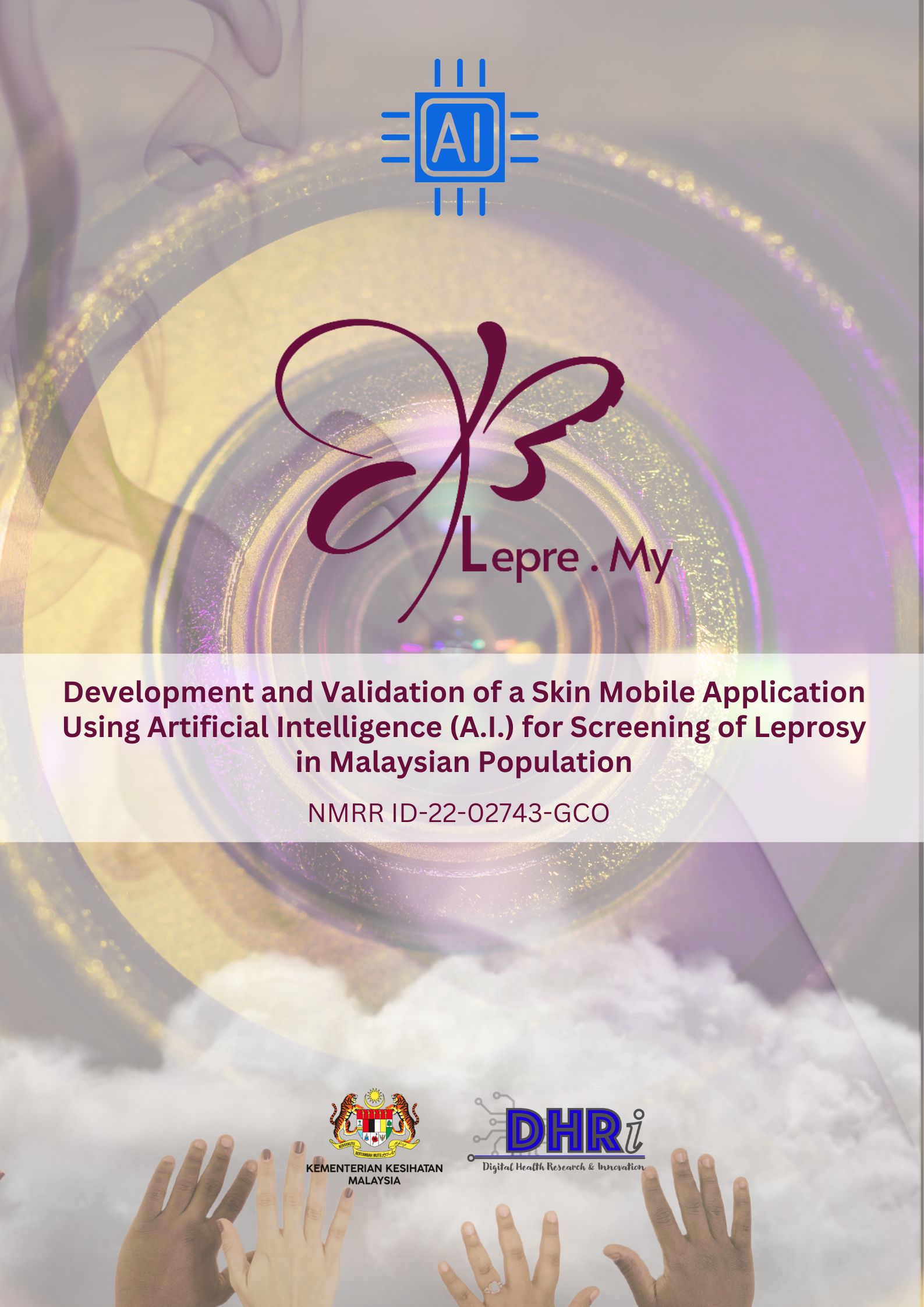DEVELOPMENT AND VALIDATION OF A SKIN MOBILE APPLICATION USING ARTIFICIAL INTELLIGENCE (A.I.) FOR SCREENING OF LEPROSY IN MALAYSIAN POPULATION
NMRR ID-22-02743-GCO
Leprosy, a persistent infectious condition caused by Mycobacterium leprae, often remains hidden in our bodies for years, with an average incubation period of about 5 years and the potential to stay dormant for up to 20 years before revealing itself through visible symptoms.
Malaysia has achieved the remarkable status of leprosy elimination since 1994, boasting a prevalence rate of just 0.9 cases per 10,000 people. However, we still face challenges in detecting cases in a timely manner. Surprisingly, over 80% of our cases are the more severe multi-bacillary type of leprosy, and 5%-6% of new cases already exhibit permanent disabilities. Shockingly, more than 3% of these cases are children.
One significant hurdle to early detection is the low level of suspicion among our medical professionals. Awareness about leprosy and its telltale signs remains alarmingly inadequate. Often this disease is misdiagnosed as common skin ailments like contact dermatitis, psoriasis, eczema, vitiligo, or a simple skin infection.
With advances in deep learning and machine learning, particularly through convolutional neural networks (CNN), have revolutionized medical image analysis. In dermatology, these cutting-edge techniques have achieved astonishing accuracy rates of over 90% in diagnosing various skin conditions.
Our groundbreaking study aims to harness the power of AI-driven digital health screening using images to combat leprosy effectively, aligning with the WHO's global strategy to eliminate leprosy entirely, moving us closer to "Towards Zero Leprosy." This innovative concept expands access to timely patient care and accelerates treatment for those diagnosed positively, ensuring a brighter, healthier future for all.





